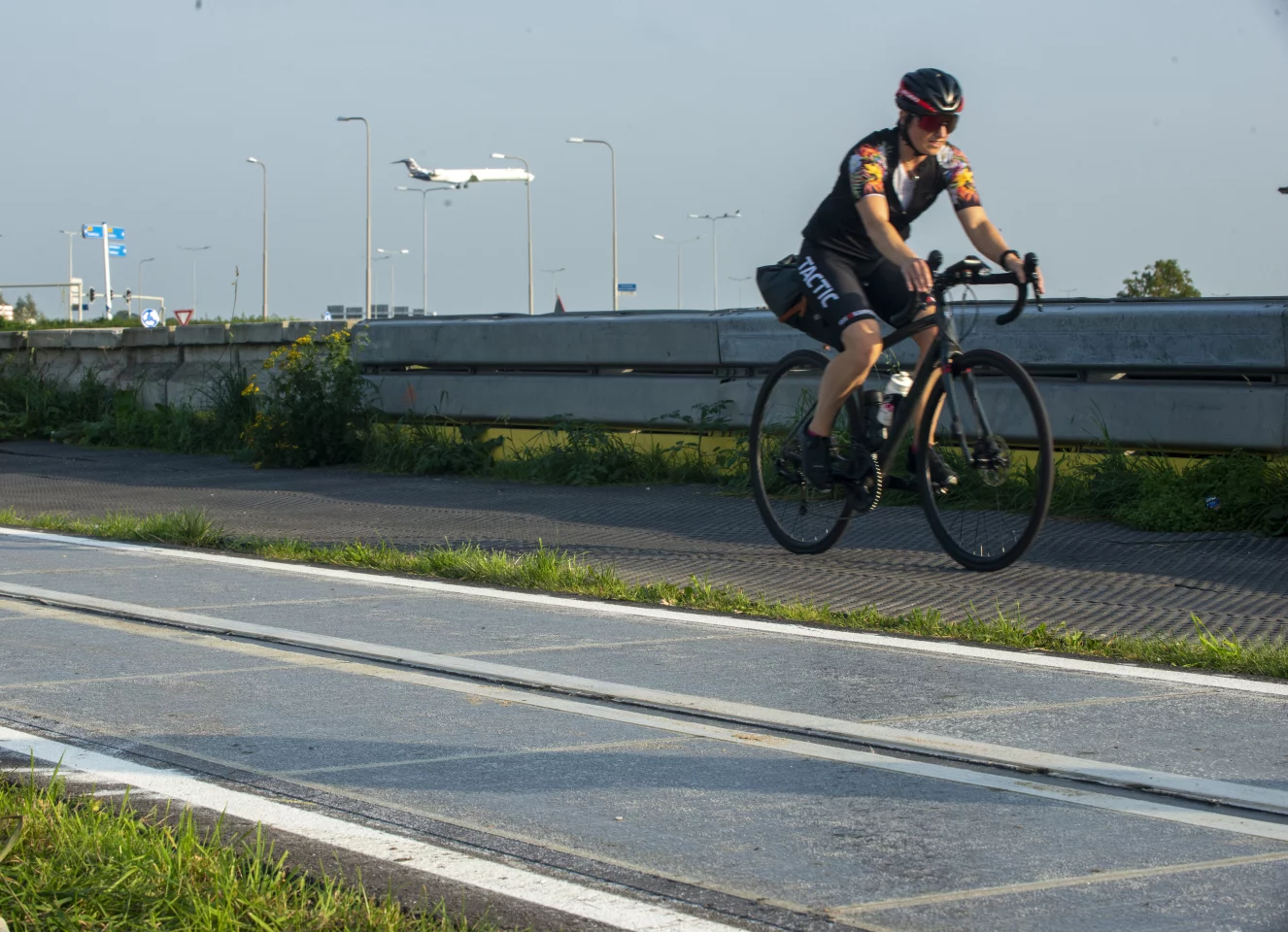The Dutch love to cycle. So much so that there are more than 35,000 km (over 21,747 miles) of cycle paths snaking through the Netherlands. Two of those bike routes have now been topped with photovoltaic cells to produce renewable energy while they face skyward.
Construction company the BAM Royal Group and the Colas Group's Wattway subsidiary have joined forces to install the latter's Wattway Pack panels on 1,000 m2 of bike paths in the North Holland province and another 1,000 m2 in the North Brabant area.
Unlike the ambitious Solar Roadways project, or even earlier bike path installs in the Netherlands, the Wattway "trafficable, renewable energy-producing photovoltaic panels" are installed over the top of existing cycle routes without needing to rip up the surface, and glued in place.
The PV cells in each panel are encased within multiple layers of resin to protect them from the wear and tear of daily bike traffic, and the setup is accompanied by an electrical cabinet with battery storage.

The Wattway Pack concept was originally launched back in 2015, and has since been rolled out across more than 50 pilot sites around the world – including a section of roadway through a Normandy village in 2016 – ahead of commercial launch in 2019. The company reports that efficiency has improved considerably since then, going from 119 Wp/m2 to 148 Wp/m2.
The target for the latest installation – cited as "the first project of this scale in the country" – is to produce 160 MWh of renewable energy during its first year, and beyond. Not a lot in the grand scheme of things, but every little helps in the provinces' battle to meet their eco targets. The sites will be monitored and maintained for 5 years.
Source: Wattway








